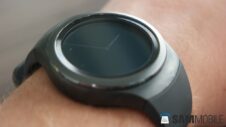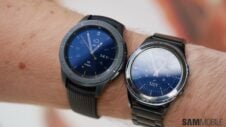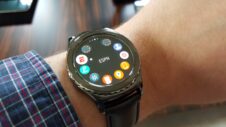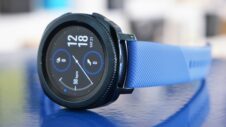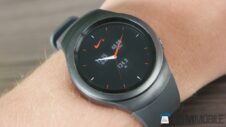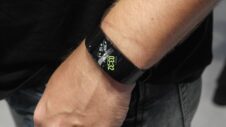The Gear S2 is Samsung’s latest smartwatch to hit the market and, as fits the normal consumer expectation of the latest device having advantages over the former, it has a few advantages over the 2014 Gear S. One such feature that Samsung has made its trademark in 2015 is wireless charging – and the Gear S2, like the Galaxy S6, S6 edge, S6 edge+, and the Galaxy Note 5, boasts the technology.
Depending on where your perspective falls, you may either 1) embrace wireless charging, 2) hate it, or 3) have no affection toward it whatsoever, but there’s one reason why you may appreciate it in the Gear S2: wireless charging prevents the Gear S2 from having the charging cradle wear and tear problem of the Gear S (or the Gear Live, which had a similar charging cradle that managed to damage some units).
I purchased my Gear S 3G model last December, a week and a half before Christmas to be exact, and loved it. Everything worked as I’d hoped, and the charging cradle freed me from having to rely on charging wires when the battery died. The charging cradle is Samsung’s way of allowing consumers to have a charging setup on the go whereby they can have as much as four days on a single charge before finally being forced to place the Gear S on the charging cradle. The charging cradle comes with an adapter that must charge the cradle but isn’t necessary to charge the watch – unlike the first smartwatch in the series, the Galaxy Gear, that mandated the use of the adapter along with the charging cradle for each smartwatch charge.
At the same time, however, the Gear S charging cradle frees the user from wires when giving your smartwatch an extra 2 days or so of juice but must be snapped onto the back of the Gear S. The constant “snapping” from one charge to another has a wear-and-tear effect on the Gear S charging cradle: while it works for a while, nearly a year down the line if not sooner, you’ll start to notice that the charging cradle doesn’t snap as easily on the back of the Gear S as it once did. Pretty soon, you’ll get to a place where you can no longer snap the charging cradle into place – as I learned nearly two weeks ago.
Now, going out to buy a new charging cradle isn’t all that expensive (they’re easily affordable), but Samsung’s new Gear S2 smartwatch with its wireless charging does complicate the decision to get a new Gear S charging cradle; after all, some say, why deal with another cradle that may break in 10 months when you can buy a new Gear S2 that lets you charge your smartwatch wirelessly – without snapping a cradle onto the back of the watch? You need only sit down the watch on the charging unit and watch it charge without worrying about placement, position, or “snapping” actions. The end result is that the Gear S2’s wireless charging unit will not need replacement after 10 months or so — you'll not only enjoy the Gear S2 more but are far more likely to stick with it for another year or two, or three. Even in the fast-paced tech world in which we live where technology progresses at the speed of light, longevity is never a bad thing.
This is not to say that the Gear S is a terrible product, because it isn’t. I cannot wait to replace my Gear S charging cradle and start using my most recent favorite smartwatch yet on my wrist again. What this does show us, however, is that Samsung has given more thought and attention to the problems that plagued customers in last year’s smartwatch model. Contrary to what some have said, the Korean giant does not just toss products out on the market without giving careful thought and consideration to them. Samsung wants your customer loyalty and satisfaction, and any company that wants to remain profitable and relevant desires the same.

